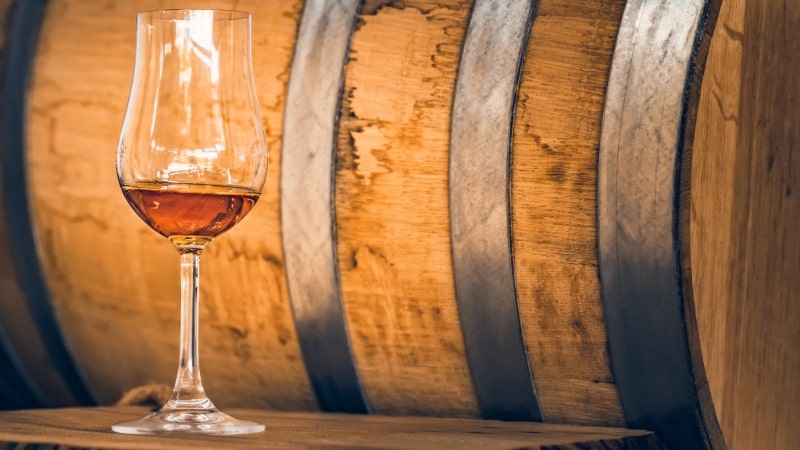
Sherry Vinegar: Production, Types and 5 Easy Uses
by Guillermo Pabon Garcia
on May 20, 2024
Sherry vinegar, known in Spanish as "Vinagre de Jerez," is a unique and well-balanced ingredient made from sherry wine. Hailing from Cádiz, Spain, it is one of the most iconic foods of the Andalucía region. Its rich history and distinct production methods make it a cornerstone of Spanish cuisine. This article explores its origins, production process, types, and versatile uses in the kitchen, including five easy recipes.
The History and Origin of Sherry Vinegar
The history of sherry vinegars is deeply intertwined with that of Sherry wine. Originating in Cádiz, Spain, its evolution from wine to vinegar marks a fascinating journey.
The Connection to Sherry Wine
Sherry vinegar has its roots in the centuries-old tradition of Sherry wine production in the province of Cádiz. Sherry wine itself is a famed product, praised for its unique aging process and diverse flavor profiles. The same methods used to create sherry wine—like aging in oak barrels—are applied to the production of Sherry vinegar.

Evolution from Wine to Vinegar
Initially, Sherry vinegar was an accidental byproduct of wine undergoing acetic fermentation. However, during the mid-20th century, bodegas began to treat Sherry vinegar as a valuable product. By aging it in barrels for extended periods, they developed a vinegar with complex and nuanced flavors, transforming it into a celebrated culinary staple.
The Production Process
The meticulous production process of Sherry vinegar involves fermentation, acetification, and aging in oak barrels using the solera system. Each stage contributes to its distinctive taste and high quality.
Traditional Methods
The journey begins with high-quality Sherry wine made from Palomino, Pedro Ximénez, or Moscatel grapes. Through natural fermentation, alcohol is converted into acetic acid, forming the base for Sherry vinegar. The solera system ensures consistent quality, blending younger vinegars with more mature ones to achieve a well-balanced flavor profile.
The Solera System
Barrels are arranged in tiers, known as criaderas, allowing for the periodic transfer of vinegar between levels. This dynamic aging system adds depth and complexity, making sherry vinegars stand out among other options like balsamic vinegars or apple cider vinegar.
Regulatory Standards
The production of Sherry vinegar is protected by a Protected Designation of Origin (PDO) status, ensuring adherence to traditional methods and strict quality standards. The Consejo Regulador oversees factors like aging periods and acidity levels to guarantee the highest quality.
Types of Sherry Vinegar
- Sherry Vinegar: Aged for at least 6 months, it offers bright acidity and subtle oaky notes, perfect for salad dressings and marinades.
- Sherry Vinegar Reserva: Aged 2+ years, with richer flavors and a deeper amber hue, ideal for sauces and stews.
- Sherry Vinegar Gran Reserva: Aged over 10 years, it boasts intense caramel and dried fruit notes, making it a luxurious addition to gourmet dishes.
Varieties Based on Grapes
Sherry vinegars are further categorized by the grape variety used:
- Palomino Vinegar: Known for its dryness and balanced acidity, it pairs well with vinaigrettes and roasted meats.
- Pedro Ximénez Vinegar: Sweet and syrupy, with flavors of raisins and caramel, perfect for reductions and desserts.
- Moscatel Vinegar: Aromatic and fruity, it complements seafood and delicate dishes.

Culinary Uses of Sherry Vinegar
The versatile sherry vinegars are a chef’s favorite for enhancing various dishes. Here are some popular uses:
- Salad Dressings: Combine with olive oil for a tangy, well-balanced vinaigrette.
- Tomatoes: Drizzle over fresh tomatoes to enhance their natural sweetness.
- Soups and Stews: Add depth to gazpacho, salmorejo, and winter stews.
- Marinades: Use for meats or vegetables to infuse rich flavors.
- Sauces and Reductions: Create glossy reductions for roasted vegetables or meats.
Gran Capirete Sherry Vinegar: A Premium Choice
Gran Capirete is a leading producer of Sherry vinegar, known for its traditional methods and exceptional quality. Aged in American oak barrels, Gran Capirete vinegar offers unparalleled complexity and richness, making it a favorite in gourmet kitchens.
Five Easy Recipes Using Sherry Vinegar
- Sherry Vinegar Vinaigrette: Blend sherry vinegar, olive oil, Dijon mustard, and garlic for a gourmet salad dressing.
- Gazpacho: Add a splash of sherry vinegar to this classic tomato-based soup for a tangy twist.
- Marinated Chicken: Combine sherry vinegar with olive oil, soy sauce, and herbs for a flavorful marinade.
- Roasted Vegetables: Glaze vegetables with sherry vinegar and honey before roasting.
- Stewed Beans: Add a touch of sherry vinegar to beans for a tangy, complex flavor.

Conclusion
Sherry vinegar is a cornerstone of Spanish cuisine, offering a unique blend of tradition, versatility, and flavor. Its aging process in oak barrels and distinct flavor profiles make it a standout ingredient in any kitchen. For the finest quality, explore Gran Capirete and elevate your cooking with this exquisite vinegar.

